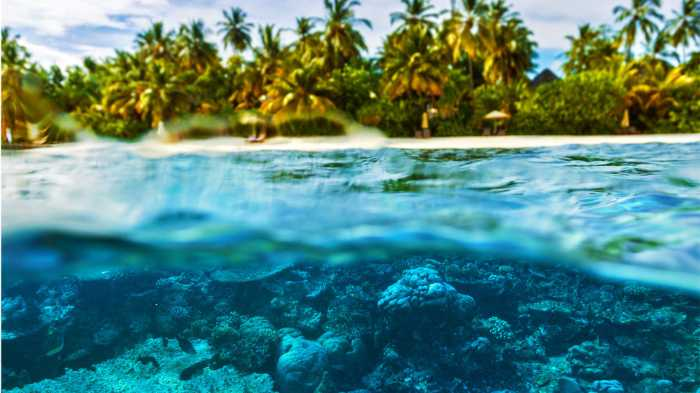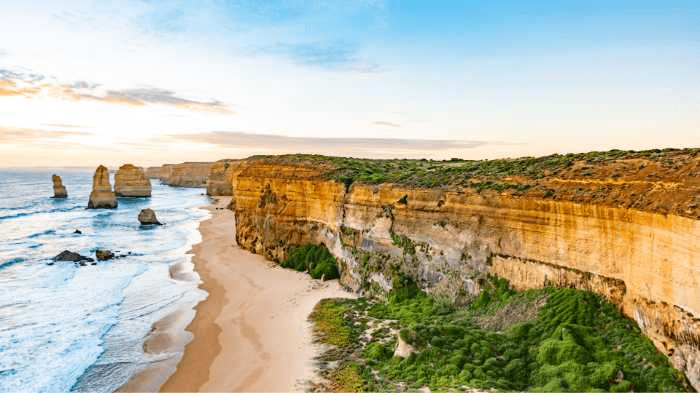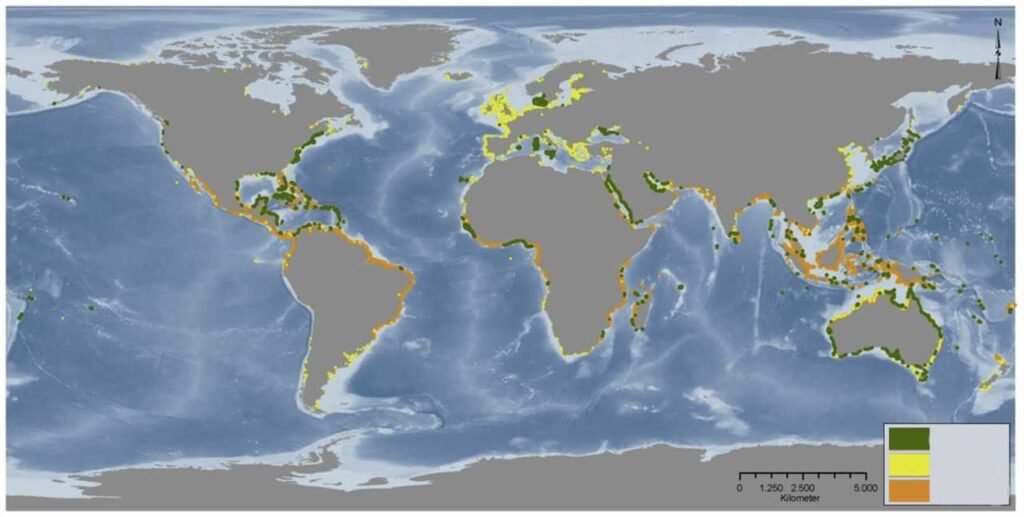
Did you know that the coastal waters of the world are home to some of the most important ecosystems on the planet? These ecosystems, known as blue carbon ecosystems, play a vital role in mitigating climate change. In this blog post, we will discuss what blue carbon is, and why it is so important to protect these ecosystems. We will also explore how you can help protect blue carbon ecosystems in your own community!
- What is coastal ecosystem management?
- What is carbon sequestration?
- What are coastal wetlands?
- What are tidal marshes?
- What is the role of national greenhouse gas inventories?
- Is blue carbon bad?
- What is the cause of blue carbon?
- What is blue carbon and why is it important?
What is coastal ecosystem management?
Coastal ecosystem management is the process of protecting and restoring coastal ecosystems, such as wetlands, seagrasses, and coral reefs. It also includes managing human activities in coastal areas, such as coastal development, fishing, and tourism. Coastal ecosystem management can help to protect coastal communities from storms and flooding, while also providing important habitat for fish, birds, and other wildlife. In addition, healthy coastal ecosystems can play a role in climate change mitigation by storing carbon and capturing carbon emissions.
What is carbon sequestration?
Carbon sequestration is the process of capturing and storing carbon, which can be found in the form of emissions from things like burning fossil fuels. It’s a way of reducing atmospheric carbon levels in an effort to combat climate change. Various natural processes like the oceanic carbon cycle help to sequester carbon, but there is also potential for man-made carbon sequestration, through things like planting trees or capture and storage technologies. Blue forests like seagrasses, mangroves, and salt marshes are particularly efficient at sequestering carbon, and are often referred to as “carbon sinks.” Maintaining these ecosystems is therefore critical for mitigating climate change.
What are coastal wetlands?
Coastal wetlands are habitats that are found along the coastline. They provide a number of benefits, including coastal protection, wetland habitats, and carbon storage. Coastal wetlands play an important role in sequestering CO2 from the atmosphere and storing it in the form of vegetative matter considered the vegetated coastal ecosystems. This captured carbon is then released back into the atmosphere when the vegetation dies and decomposes. In this way, coastal wetlands act as a natural “carbon sink” by helping to reduce atmospheric levels of greenhouse gases. As a result, they play an important role in mitigating climate change helping the coastal communities and the global ecology.
What are tidal marshes?
A tidal marsh is a type of wetland that is found in areas with high tides and low-lying coasts. Tidal marshes are important as they can capture and store large amounts of carbon. This helps to reduce coastal erosion and protect against storms and flooding. In addition, tidal marshes help to improve water quality by filtering out pollutants and sediments. Finally, tidal marshes are important for biodiversity, as they provide habitat for a variety of plant and animal species.
What is the role of national greenhouse gas inventories?
National greenhouse gas inventories play an important role in monitoring and measuring progress toward reducing emissions and enhancing carbon sinks. These inventories provide reliable, consistent, and comparable data that can be used to track trends over time, compare performance across jurisdictions, identify opportunities for mitigation action, and support the development and monitoring of mitigation policies and measures. Inventories also play an important role in international reporting under the United Nations Framework Convention on Climate Change.
Is blue carbon bad?
No, blue carbon is not bad. Blue carbon refers to the role that marine and coastal ecosystems play in sequestering carbon. Blue carbon ecosystems include mangroves, seagrasses, tropical forests, and salt marshes. These ecosystems are incredibly efficient at capturing and storing carbon, and they also provide a number of other benefits, such as coastal protection and habitat for fisheries.
What is the cause of blue carbon?
Blue carbon is the carbon that is stored in the ocean. It is important because it helps to regulate the global climate and store carbon that would otherwise be released into the atmosphere. Blue carbon can be found in two forms: marine suspended particulate organic matter (MSPOM) and seagrass. MSPOM is made up of small ocean plants and animals that sink to the bottom of the ocean where they are decomposed. Seagrass are large ocean plants that store carbon in their leaves and roots. When they die, their remains sink to the bottom of the ocean and are decomposed.
- How do coastal ecosystems help mitigate climate change?
- How can you help protect blue carbon ecosystems in your community?
- 1. Educate yourself and others
- 2. Reduce your reliance on fossil fuels
- 3. Promote coastal conservation efforts
- 4. Develop sustainable fishing practices
- 5. Volunteer with local organizations
- 6. Avoid damaging activities
- 7. Support businesses that are sustainable and environmentally friendly
- 8. Curb land-based pollution
- What are the components of marine ecosystems?
- What is a blue carbon credit?
- Is carbon dioxide lethal?
- Conclusion
- FAQs
What is coastal ecosystem management?
Coastal ecosystem management is the process of protecting and restoring coastal ecosystems, such as wetlands, seagrasses, and coral reefs. It also includes managing human activities in coastal areas, such as coastal development, fishing, and tourism. Coastal ecosystem management can help to protect coastal communities from storms and flooding, while also providing important habitat for fish, birds, and other wildlife. In addition, healthy coastal ecosystems can play a role in climate change mitigation by storing carbon and capturing carbon emissions.
What is carbon sequestration?
Carbon sequestration is the process of capturing and storing carbon, which can be found in the form of emissions from things like burning fossil fuels. It’s a way of reducing atmospheric carbon levels in an effort to combat climate change. Various natural processes like the oceanic carbon cycle help to sequester carbon, but there is also potential for man-made carbon sequestration, through things like planting trees or capture and storage technologies. Blue forests like seagrasses, mangroves, and salt marshes are particularly efficient at sequestering carbon, and are often referred to as “carbon sinks.” Maintaining these ecosystems is therefore critical for mitigating climate change.
What are coastal wetlands?
Coastal wetlands are habitats that are found along the coastline. They provide a number of benefits, including coastal protection, wetland habitats, and carbon storage. Coastal wetlands play an important role in sequestering CO2 from the atmosphere and storing it in the form of vegetative matter considered the vegetated coastal ecosystems. This captured carbon is then released back into the atmosphere when the vegetation dies and decomposes. In this way, coastal wetlands act as a natural “carbon sink” by helping to reduce atmospheric levels of greenhouse gases. As a result, they play an important role in mitigating climate change helping the coastal communities and the global ecology.
What are tidal marshes?
A tidal marsh is a type of wetland that is found in areas with high tides and low-lying coasts. Tidal marshes are important as they can capture and store large amounts of carbon. This helps to reduce coastal erosion and protect against storms and flooding. In addition, tidal marshes help to improve water quality by filtering out pollutants and sediments. Finally, tidal marshes are important for biodiversity, as they provide habitat for a variety of plant and animal species.
What is the role of national greenhouse gas inventories?
National greenhouse gas inventories play an important role in monitoring and measuring progress toward reducing emissions and enhancing carbon sinks. These inventories provide reliable, consistent, and comparable data that can be used to track trends over time, compare performance across jurisdictions, identify opportunities for mitigation action, and support the development and monitoring of mitigation policies and measures. Inventories also play an important role in international reporting under the United Nations Framework Convention on Climate Change.
Is blue carbon bad?
No, blue carbon is not bad. Blue carbon refers to the role that marine and coastal ecosystems play in sequestering carbon. Blue carbon ecosystems include mangroves, seagrasses, tropical forests, and salt marshes. These ecosystems are incredibly efficient at capturing and storing carbon, and they also provide a number of other benefits, such as coastal protection and habitat for fisheries.
What is the cause of blue carbon?
Blue carbon is the carbon that is stored in the ocean. It is important because it helps to regulate the global climate and store carbon that would otherwise be released into the atmosphere. Blue carbon can be found in two forms: marine suspended particulate organic matter (MSPOM) and seagrass. MSPOM is made up of small ocean plants and animals that sink to the bottom of the ocean where they are decomposed. Seagrass are large ocean plants that store carbon in their leaves and roots. When they die, their remains sink to the bottom of the ocean and are decomposed.
What is blue carbon and why is it important?

Blue carbon is the term used to describe the carbon stored in coastal and marine ecosystems. This includes seagrasses, mangroves, and salt marshes. These ecosystems are often under threat from development and global climate change.
As a result, blue carbon is being lost at an alarming rate. Yet, blue carbon is important for mitigating climate change. When seagrasses and other plants photosynthesize, they capture carbon dioxide from the atmosphere and store it in their leaves, stems, and roots.
In this way, blue carbon helps to regulate atmospheric carbon levels. Additionally, coastal ecosystems provide critical habitat for fish, birds, and other wildlife. They also help to protect coastlines from storms and flooding. For all of these reasons, it is essential that we conserve the blue carbon ecosystem.
How do coastal ecosystems help mitigate climate change?

Coastal ecosystems, which include coastal wetlands, mangrove forests, and seagrass meadows, play a vital role in mitigating climate change. These ecosystems are extremely efficient at storing carbon, with some estimates suggesting that they can sequester up to nine times more carbon than terrestrial forests.
In addition, coastal ecosystems are often found in areas of high rainfall and waves, meaning that they are constantly replenishing their stores of carbon. As a result, they act as a valuable buffer against the effects of climate change.
Additionally, coastal ecosystems provide a range of other benefits, such as protecting coastlines from storms and providing habitat for fish and other marine life. For all these reasons, it is clear that coastal ecosystems are an important tool in the fight against climate change.
How can you help protect blue carbon ecosystems in your community?
There are several ways that you can help protect blue carbon or coastal ecosystems in your community. For example, you can:
1. Educate yourself and others
One way to help protect blue carbon ecosystems is to educate yourself and others about the importance of these coastal habitats. By raising awareness of the threats these ecosystems face, we can rally support for conservation efforts.
Additionally, educating others about the value of blue carbon habitats can help to ensure that these coastal habitats are protected for future generations.
2. Reduce your reliance on fossil fuels
You can help reduce your reliance on fossil fuels and protect coastal ecosystems by using clean energy sources such as solar and wind power. You can also help by conserving energy through measures such as energy-efficient appliances and insulation.
In addition, you can support policies that encourage the use of clean energy and the reduction of fossil fuel consumption. By taking these actions, you can help to reduce the threat to coastal systems and play a role in protecting these important ecosystems.
3. Promote coastal conservation efforts
Coastal conservation efforts can include activities such as beach and dune protection, wetland restoration, and coral reef conservation. These activities help to reduce the amount of carbon that is released into the atmosphere, as well as improve the resilience of coastal ecosystems to climate change.
By promoting coastal conservation efforts in your community, you can help to protect coastal ecosystems and make a positive contribution to the fight against climate change.
4. Develop sustainable fishing practices
The world’s population continues to grow, and the demand for seafood is also on the rise. Unfortunately, this has led to overfishing and the degradation of many important marine ecosystems.
Coastal systems, such as mangroves, seagrass meadows, and kelp forests, are particularly vulnerable to the impacts of unsustainable fishing. These ecosystems play a vital role in sequestering carbon, providing habitat for fish and other marine life, and protecting shorelines from erosion.
To protect coastal ecosystems, it is essential to develop sustainable fishing practices that minimize the impact on these valuable ecosystems. This includes using more selective fishing gear, limiting the catch of certain species, and respecting size limits. By taking these steps, we can help to ensure that coastal ecosystems are protected for generations to come.
5. Volunteer with local organizations
Volunteer with local organizations that are working to restore and protect these important habitats. Organizations like The Nature Conservancy are engaged in a variety of projects to restore coastal blue carbon ecosystems around the world. Similarly, the International Blue Carbon Initiative works in favor of the coastal and marine systems.
By volunteering your time and talents, you can help make a difference in the fight to protect these vital ecosystems. You can also support organizations like The Nature Conservancy by donating to their efforts. Your support will help ensure that these important habitat restoration projects can continue. Together, we can make a difference in the fight to protect coastal ecosystems that have a globally significant carbon stock.
6. Avoid damaging activities
Blue carbon ecosystems are vital to the health of our planet. They provide a range of benefits, including climate regulation, food, and water security, and protection from coastal flooding. However, these ecosystems are under threat from human activities. One way to help protect them is to avoid activities that could damage them. This includes polluting the water or removing plants from the area.
Additionally, it is important to be careful not to disturb the delicate balance of these ecosystems. By taking these steps, we can help to ensure that coastal and marine ecosystems continue to play a vital role in our planet’s health.
7. Support businesses that are sustainable and environmentally friendly
As our world becomes increasingly industrialized, it is more important than ever to support businesses that are sustainable and environmentally friendly. One way to do this is to purchase products that are made from sustainable materials and that have a low impact on the environment.
Another way to support sustainable businesses is to patronize companies that use green business practices, such as energy-efficient manufacturing processes or renewable energy sources. By supporting businesses that are committed to sustainability, we can help protect coastal blue carbon ecosystems and the many benefits they provide.
You can’t improve what you don’t measure.
Free Verified Carbon Calculators.
Erase Your Carbon Footprint in less than 5 Minutes
Personal Carbon Footprint Calculator
Business Carbon Footprint Calculator
8. Curb land-based pollution
In order to curb land-based pollution, it is important to take steps to reduce the amount of greenhouse gas emissions that are emitted into the atmosphere. One way to do this is to implement policies and regulations that will reduce emissions from industry and agriculture.
Additionally, it is important to encourage individuals and businesses to adopt green practices that will help to reduce their impact on the environment.
Furthermore, it is crucial to invest in renewable energy sources that will have a positive impact on the environment. By taking these steps, we can help protect aquatic ecosystems and reduce the amount of pollution that is released into the atmosphere.
What are the components of marine ecosystems?

Marine ecosystems are complex systems that can be found in oceans, coastal areas, and estuaries. They are characterized by a wide variety of physical and chemical conditions, as well as a diverse array of plant and animal life. The three main components of oceanic ecosystems are the abiotic environment, the biotic environment, and the interactions between them.
The abiotic environment includes the physical and chemical factors that affect marine life, such as temperature, salinity, light, and nutrients. The biotic environment is made up of the living organisms that inhabit maritime ecosystems, including fish, invertebrates, whales, and plankton. The interactions between the abiotic and biotic components are what make oceanic ecosystems so dynamic and complex.
These interactions can be between different species, or between members of the same species. For example, predators hunting prey or fish grazing on seaweed. Marine ecosystems are constantly changing and evolving in response to these interactions.
What is a blue carbon credit?
Blue carbon credits are a type of environmental offset that can be used to reduce the carbon footprint of an activity or business. The term “blue carbon” refers to the oceans and marine life, which play a vital role in the global carbon cycle. Marine plants and animals store huge amounts of carbon in their bodies, and when they die, this carbon is released into the atmosphere.
Blue carbon credits aim to offset this release of greenhouse gases by funding projects that protect and restore coastal ecosystems. These projects can include mangrove reforestation, seagrass conservation, and oyster reef restoration. By protecting these important ecosystems, blue carbon credits help to reduce the amount of greenhouse gases in the atmosphere and slow the pace of climate change.
Is carbon dioxide lethal?

As anyone who has ever been in a sauna or steam room knows, carbon dioxide (CO2) can have a profound effect on the human body. In high concentrations, it can lead to dizziness, headache, and even suffocation. However, in lower concentrations, it is not considered to be lethal. In fact, carbon dioxide is an essential component of photosynthesis, the process that helps plants convert sunlight into energy.
While carbon dioxide is not lethal to humans in small doses, it can have devastating consequences for the environment. CO2 is one of the greenhouse gases that trap heat in the atmosphere, causing the Earth’s surface to warm. This rise in temperature can lead to melting glaciers, rising sea levels, and more extreme weather conditions.
Greenhouse gas emissions from human activity are the main cause of climate change, so it’s important to do our part to reduce our carbon footprint. By making small changes in our daily lives, we can help to slow down climate change and protect our planet for future generations.
Conclusion
In conclusion, it is important to be aware of the many ways that we can help to protect blue carbon. These ecosystems play a vital role in mitigating climate change and provide a number of other benefits for the environment. We can support sustainable businesses, reduce land-based pollution, and invest in renewable energy sources. By taking these steps, we can make a positive impact on the environment and help to preserve these important ecosystems for future generations.
FAQs

